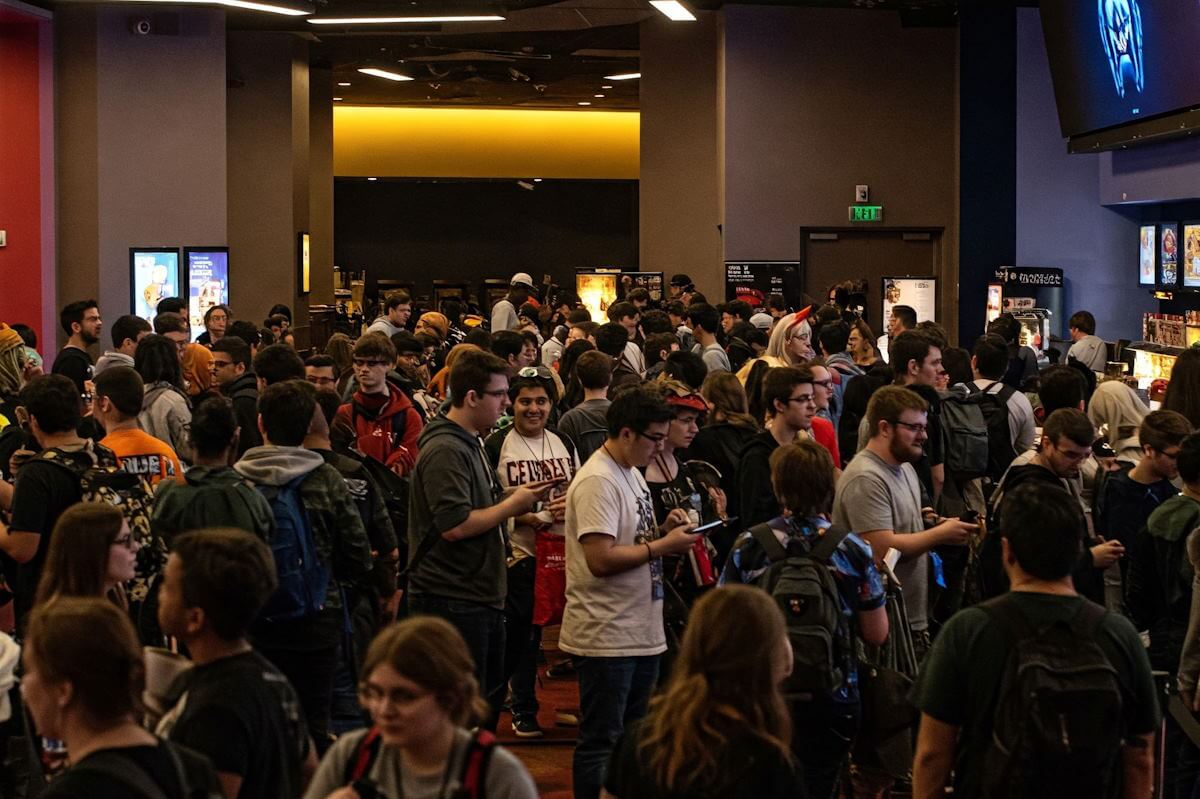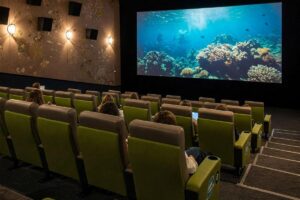The landscape of moviegoers has shifted significantly over the years, reflecting broader societal changes and evolving consumer preferences. Traditionally, the audience for theaters was predominantly comprised of adults, particularly those aged 30 to 60. However, recent trends indicate a marked change in demographics, encompassing younger generations, families, and niche audience segments. This shift has prompted theaters to adapt their strategies in order to engage and attract these diverse viewers.
One of the most notable changes in the moviegoing audience is the rise of younger generations, including Millennials and Generation Z. These groups exhibit different entertainment preferences, favoring immersive experiences and integrating technology into their viewing habits. For instance, the popularity of streaming services has changed how younger audiences consume films, pushing theaters to rethink their value propositions. In response, many cinemas are offering advanced amenities such as enhanced sound systems, high-definition screens, and comfortable seating arrangements to provide an experience that cannot be replicated at home.
Furthermore, families are becoming a prominent fixture at cinemas, seeking movies that appeal to various age groups. This trend has led theaters to diversify their programming, curating selections of family-oriented content, including animated films and family-friendly releases. The understanding is that by creating a welcoming environment for parents and their children, theaters can attract a broader audience base.
Additionally, niche segments, including LGBTQ+ audiences, film enthusiasts, and international cinema fans, are gaining recognition within the movie theater landscape. Many theaters are responding to these audiences by hosting special screenings, offering themed events, or featuring films that emphasize diversity and representation. These adaptations not only cater to specific interests but also work to foster a sense of community among attendees.
Enhanced Viewing Experiences
In recent years, the landscape of movie theaters has undergone significant transformation, driven primarily by technological advancements aimed at captivating new audiences. With the ever-evolving nature of cinema, theaters are increasingly investing in enhanced viewing experiences that promise to engage and immerse viewers in ways previously thought unattainable. One of the most notable innovations includes 4D projections, which not only feature high-definition visuals but also incorporate environmental effects such as motion, wind, and scents. This multisensory approach elevates the traditional film experience, inviting audiences to feel as though they are part of the action.
Furthermore, IMAX screens have become a hallmark of premium viewing experiences, drawing in audiences eager for larger-than-life visuals. IMAX technology enables films to be projected with extraordinary clarity and detail, offering a unique perspective that standard screens cannot match. The enlarged screen size combined with specialized sound systems creates an immersive atmosphere, allowing viewers to engage with the narrative on a profound level.
Upgraded sound systems play an equally pivotal role in enhancing the cinematic experience. Advanced audio technologies such as Dolby Atmos or DTS:X deliver sound that travels in three-dimensional space, enabling audiences to hear sound from above, below, and around them. This enveloping sound quality contributes to the overall impact of a film, driving emotional responses and increasing investment in the storyline. The integration of these enhancements not only makes cinema more appealing but also caters to the desire of modern moviegoers for unique and captivating experiences. Theater chains are recognizing that in order to draw in audiences, they must offer more than just films; they must create an experience that lingers long after the credits roll.
Diverse Film Offerings
In recent years, movie theaters have recognized the need to cater to a broader audience by expanding their film offerings. This shift reflects an awareness of the diverse cultural backgrounds and varying interests of moviegoers. Traditionally, the film industry focused predominantly on mainstream blockbusters, often resulting in a limited selection for viewers. However, as audience preferences evolve, theaters are embracing a more inclusive approach, showcasing a wide array of genres, international cinema, independent films, and documentaries.
By diversifying their film selections, theaters are now able to cater to different tastes, attracting those who may have previously felt underrepresented by conventional offerings. For instance, screenings of international films allow audiences to explore global narratives and unique storytelling styles, providing insight into different cultures. Similarly, independent cinema often pushes creative boundaries, offering fresh perspectives that resonate with niche audiences. Documentaries, too, serve an important function by bringing real-world issues to the forefront, engaging viewers in discussions that matter to society.
The trend toward a more varied film lineup is particularly significant in the current cultural climate, where audiences are increasingly seeking authentic representations and stories that reflect their experiences. Through film festivals, special events, and curated series, theaters are paving the way for independent filmmakers and international creators to showcase their work on the big screen. This not only enhances the theatrical experience but also fosters a sense of community among diverse audience groups. As the landscape of cinema continues to evolve, theaters that embrace this diversity will likely be at the forefront of a more inclusive and engaging movie-going experience, ultimately leading to increased patronage and engagement with all facets of film.
Increased Focus on Food and Beverage Options
In recent years, movie theaters have significantly transformed their concession stands and overall dining experiences to cater to the evolving preferences of their audiences. The traditional offerings, primarily consisting of popcorn, candy, and sodas, are being replaced and enhanced by a more gourmet selection that appeals to food-conscious viewers. This shift is part of an effort to attract diverse audiences who seek a more comprehensive entertainment experience.
Many theaters are now embracing the trend of gourmet food options, incorporating items such as artisanal pizzas, premium nachos, and even full meal packages that can be enjoyed during screenings. This approach not only improves the quality of offerings but also enhances the overall moviegoing experience. Draft beer and craft cocktails have also found their place in many theaters, providing patrons with a more sophisticated beverage selection that complements the culinary enhancements.
Moreover, the focus on healthy snack options is becoming increasingly prevalent as awareness around dietary preferences grows. Many theaters are introducing a variety of wholesome choices, including gluten-free snacks, organic popcorn, and plant-based alternatives, allowing viewers to enjoy a guilt-free indulgence while watching their favorite films. This expansion in the food and beverage landscape is aimed at creating a more personalized experience that resonates with modern consumers who prioritize both taste and health.
Furthermore, some theaters have taken the dining experience to the next level by offering in-seat service, allowing guests to place orders directly from their seats. This convenience not only enhances the comfort of the audience but also positions theaters as dining destinations in addition to mere venues for viewing films. Overall, by revamping their food and beverage offerings, movie theaters are effectively catering to the tastes and demands of new audiences, ultimately elevating the cinematic experience for all.
Special Events and Themed Screenings
In recent years, movie theaters have embraced the trend of hosting special events and themed screenings as a means to attract diverse audiences. These unique initiatives not only enhance the traditional viewing experience but also provide opportunities for community engagement, creating a vibrant atmosphere that extends beyond the standard film schedule.
Themed nights are an increasingly popular format that resonates with moviegoers. By curating specific themes—such as classic horror, cult favorites, or holiday specials—cinemas have been able to foster a sense of nostalgia and encourage communal enjoyment among attendees. Viewers are eager to participate, often dressing in costumes or partaking in related activities that enrich the overall experience. This form of interactive engagement transforms a simple screening into a memorable event that appeals to both cinema enthusiasts and casual moviegoers.
Moreover, director Q&A sessions have become a staple of many movie theaters, providing a platform for filmmakers to connect with audiences on a personal level. Through these discussions, viewers gain deeper insights into the creative process, thereby strengthening their appreciation for the film. The opportunity to ask questions or hear behind-the-scenes anecdotes adds considerable value to the cinema experience, making it more than just a passive act of watching a movie.
Sneak previews and exclusive screenings further bolster theater attendance by generating excitement around anticipated films. Such events often draw dedicated fanbases who are eager to be among the first to experience new releases. By creating buzz through limited access to these highly sought-after viewings, theaters not only enhance the allure of cinema attendance but also cultivate a loyal audience base.
In summary, the rise of special events and themed screenings demonstrates how movie theaters are innovatively adapting to the evolving preferences of audiences. By offering unique experiences that go beyond the typical film lineup, cinemas are able to enrich the cultural fabric of their communities and attract a wider range of viewers.
Loyalty Programs and Memberships
In an effort to adapt to changing consumer preferences, many movie theaters are increasingly implementing loyalty programs and memberships aimed at encouraging repeat visits. These initiatives are designed to enhance the overall viewing experience while fostering a sense of community among patrons. By offering tailored benefits, theaters can create a more committed audience base that returns regularly.
One prominent feature of these loyalty programs is the opportunity for discounted tickets. Members can enjoy significant savings, making it more feasible for them to attend multiple screenings throughout the month. This not only incentivizes attendance but also positions the theater as a valued entertainment option in a crowded marketplace. Discounts often extend beyond just ticket prices to include concessions, enabling customers to enjoy snacks and beverages at reduced rates, further enhancing their visit.
In addition to discounts, exclusive screenings are another attractive perk of loyalty programs. Members may gain access to early showings, special events, or even film premieres that are not available to the general public. These exclusive opportunities not only cultivate a sense of privilege but also draw in avid film enthusiasts eager to experience content before it becomes widely available. This strategy allows theaters to build a loyal customer base that is personally invested in the venue’s offerings.
Moreover, many programs incorporate a rewards system that allows members to accumulate points for each visit, which can later be redeemed for various benefits. These incentives create a gamified experience, encouraging patrons to return frequently in order to achieve higher status or unlock additional perks. In today’s competitive entertainment landscape, these loyalty programs and membership options serve as vital tools for theaters looking to enhance customer engagement and ensure long-term patronage.
Focus on Accessibility and Inclusivity
In recent years, movie theaters have increasingly recognized the necessity of catering to diverse audiences, particularly by addressing the needs of those with disabilities. The adoption of various accessibility measures reflects a commitment to inclusivity and acknowledges the importance of allowing everyone to enjoy the cinematic experience. This trend not only meets the legal requirements under the Americans with Disabilities Act (ADA) but is also a testament to the evolving understanding of social responsibility within the entertainment industry.
Theaters are now implementing advanced hearing impaired technologies, such as assistive listening devices and closed captioning services. These innovations enable individuals with hearing loss to fully engage with the film’s audio components. With the incorporation of apps that offer enhanced subtitle displays, audiences can customize their viewing experience to suit their needs, ensuring they do not miss crucial dialogues and sound cues.
Moreover, sensory-friendly screenings have emerged as a pivotal offering for individuals on the autism spectrum or those with sensory sensitivities. These specialized screenings feature adjustments like dimmer lights, lower sound volumes, and a more relaxed atmosphere. Patrons are encouraged to move around and take breaks, fostering an environment where they feel secure and comfortable. Such screenings symbolize a growing acknowledgment that everyone deserves a chance to partake in the joy of cinema without overwhelming stimuli.
The theater industry is also exploring additional inclusive practices, such as ensuring wheelchair accessibility in all areas, providing captioned films, and training staff to accommodate diverse needs. This multifaceted approach not only broadens the audience base but ultimately contributes to a richer, shared community experience. By embracing inclusivity and focusing on accessibility, theaters are making significant strides toward a welcoming environment for all film enthusiasts.
Collaboration with Streaming Services
In recent years, the landscape of film distribution has undergone significant transformation, largely driven by the emergence of streaming platforms. Recognizing the shifting preferences of moviegoers, traditional movie theaters are increasingly forming partnerships with these services to showcase exclusive content or early releases. This strategic collaboration aims to blend the strengths of both mediums, drawing in audiences who might prefer the comfort of home viewing over the conventional cinema experience.
One notable example of this collaboration is the selective release of films that debut simultaneously in theaters and on streaming platforms. This approach not only expands the audience reach but also allows theaters to attract viewers who previously opted to stay home. By offering exclusive screenings of new releases from popular streaming services, theaters are making a concerted effort to cultivate a unique viewing environment that cannot be replicated at home. Such events often include special incentives, such as Q&A sessions with filmmakers or cast members, thereby enhancing the overall cinematic experience.
Moreover, through tailored marketing campaigns and events, theaters can target specific demographics that stream content regularly but may not frequently visit cinemas. By showcasing notable streaming service titles, theaters encourage former patrons to rediscover the magic of the big screen. Collaborations may also lead to the co-production of films tailored for theatrical releases, balancing both cinematic aspirations and the immediacy of streaming accessibility.
As theaters continue to adapt to the evolving entertainment landscape, their partnerships with streaming services exemplify a proactive response to changing consumer behaviors. This synergy is essential for ensuring the long-term viability of movie theaters, as they strive to accommodate new audiences while preserving the communal experience that cinema offers.
Conclusion: The Future of Movie Theaters
As we reflect on the evolving dynamics of the movie theater industry, it is clear that adaptation is crucial for survival in a rapidly changing entertainment landscape. The increasing preference for home streaming and the emergence of various entertainment platforms have compelled theaters to rethink their traditional business models. In response, many theaters are enhancing the audience experience by incorporating advanced technologies and comfortable viewing environments, which not only attract loyal patrons but also draw in new audiences.
Interactive experiences, such as special screenings, themed events, and live performances, have emerged as effective strategies for engaging viewers. These innovations provide more than just an opportunity to watch a film; they create memorable experiences that resonate with diverse audiences. Furthermore, technological advancements—including improved sound systems and state-of-the-art projection methods—are crucial in delivering high-quality cinematic experiences that distinguish theaters from at-home viewing options.
Theater chains are also recognizing the importance of community involvement, actively collaborating with local filmmakers and hosting community events to foster relationships within their regions. Such initiatives not only strengthen the connection with the audience but also create a sense of ownership and pride around local cinemas, thereby enhancing the overall attraction of movie-going.
In conclusion, the future of movie theaters hinges on their ability to innovate and adapt. By embracing new technologies, fostering community ties, and offering unique experiences, theaters can not only retain their current audience base but also attract new viewers. The ongoing commitment to enhancing the cinema experience remains paramount, ensuring that movie theaters continue to thrive amidst evolving consumer preferences and competition from digital platforms.




